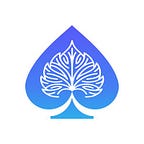Hi Community,
We have announced the launch of the Bodhi Prediction Market Alpha last week and received tremendous trial requests on alpha testing. It’s very exciting to see the huge support from the community and we will absolutely keep on with our hard work. Today I’m psyched to post a step-by-step walkthrough of our Bodhi application.
Installation
Bodhi Prediction Market application includes multiple components and we have packaged them all in one setup kit using Docker.
- Install Docker: https://docs.docker.com/engine/installation/#desktop
- Open up a Terminal and clone the Github bodhi-app repository with the command:
git clone — recursive https://github.com/bodhiproject/bodhi-app.git - In Terminal, navigate to under the newly cloned folder bodhi-app and run the following to build and start the application.
docker-compose up -d - To stop the bodhi-app run this command in Terminal:
docker-compose stop
The build will take about 1 ~ 2 minutes. Once installed, open up a tab in web browser and go to http://localhost:5557, you will see a loading page like below screenshot. It indicates that the app is waiting for qtumd node to sync with blockchain and usually takes 15–30 min to complete, upon which UI will unlock itself and display latest markets.
UI Page
After installation and loading up the App we can see below 4 main elements on Dashboard.
1. Tabs
Tabs like Betting, Setting, Voting and Completed represent the different participation stages of markets.
2. Markets
Market cards are ongoing market events, which show overview information including title, betting/voting progress, total balances and participation end block.
3. Wallet Addresses
On the top right corner, the App auto loads wallet addresses from Qtumd (Qtum desktop application). Each dropdown item displays a Qtum address, QTUM balance, and BOT balance.
4. Current Block Count
Next to the Wallet dropdown is current Qtum block count. Since our test version is running on Qtum Testnet, that number represents the latest Testnet block.
User can play with the Bodhi application in two ways, as a participant and a market creator. The majority of users would be playing as the former of which steps are very short and simple.
User Guide
Users can BET (participating in an existing market event), VOTE (acting as one of the arbitrators) or SET (create a new market event), below are how they work accordingly:
1. Bet -> Withdraw
Users can participate a market by putting his chips (QTUM) on one or more outcomes of a market event. For example, I believe the outcome of market “What will BOT’s price be at CoinMarketplace on Jan 1st 2018 11:59 PM?” is “> $2 and <= $5” and I would bet 5 QTUM on that outcome. When time passes Jan 1st 2018 and market result is set, if the outcome turns out to be the the same as I bet, I would win QTUM from people who bet on losing outcomes.
As below screen shows, I can withdraw 13.33 QTUM total after completion, meaning that I have won 8.33 QTUM from this market event.
2. Vote -> Withdraw
Users could also participate as one of the arbitrators. In the above event, if the actual outcome in reality is “Greater than $2 and less than or equal to $5” but the Centralized Oracle (result setter) sets it wrong by mistake or intentionally, the application will kick off a Decentralized Oracle automatically for arbitration. During the arbitration stage, any user could stake their BOT tokens on the right outcome they believe, e.g. “Greater than $2 and less than or equal to $5” to challenge the set result. If staking BOTs reach a certain amount of value (the consensus threshold), lets say 100 BOT for simplicity, then the Decentralized Oracle would conclude that the new result becomes “Greater than $2 and less than or equal to $5”. In the event of that, any users who have voted for outcome “Greater than $2 and less than or equal to $5” will win BOT from other outcomes, as well as the Centralized Oracle.
Users can also both bet and vote on the same market. Winning QTUM and BOT will both be calculated and displayed during withdrawal.
3. Create -> Set Result
Any user can also be host of a market event by creating one and appointing a Centralized Oracle (result setter). Creating a market doesn’t cost any extra fee except gas but setting the result requires the Centralized Oracle to stake 100 BOT, which will be lost if the result is proven wrong by any subsequent Decentralized Oracles.
Get Test Tokens and Help Us Gather Bugs!
To receive your test tokens, please email coin@bodhi.network with a Qtum Testnet address. We will send 10 Test QTUM and 100 Test BOT Tokens to the provided address so you can try out our platform. These test tokens have no monetary value, and cannot be redeemable for real-value, they are strictly for testing purposes. Make sure you send us a Qtum Testnet address (which starts with a lowercase q), as we cannot provide test tokens to a Qtum Mainnet address.
You can find your Qtum Testnet address in the top right drop down menu of the Bodhi application. Hover your mouse over the address that has the dropdown arrow next to the Block Count.
If there’s any more questions you have regarding the user guide, please feel free to email us at contact@bodhi.network or ping us in our Telegram groups: https://t.me/BodhiEN
In order to help us release our next version on schedule in next two month, users of the alpha release are also encouraged to report any bugs, issues or errors at https://github.com/bodhiproject
The first version of Bodhi is still a beautiful baby in a cradle, yet she is certainly a glimpse of what is to come. Please try out our test version, provide feedback and help us grow! We will announce our bug bounty and feedback rewards shortly in January 2018. Let’s shape the Bodhi Prediction Market together!
